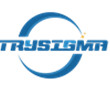
Quanxu Quality First
Service FirstPrecision Machinery Technology Co., Ltd

Suzhou Quanxu Precision Machinery Technology Co., Ltd. is a professional company specializing in precision parts processing, five axis linkage parts processing, complex parts processing, invar alloy parts processing, titanium alloy parts processing, engineering plastic parts processing and non-standard parts processing. It also provides customers with modular assembly services in a one-stop manner, focusing on the fields of medical treatment, semiconductor, aviation, energy, automobile and communication. We have accumulated many years of rich experience in precision machining, surface treatment and other technical processes of invar alloy, titanium alloy and other difficult metal materials.
Physical and chemical functions:
1. Density. After cold deformation, the density of aluminum is reduced due to the defects of microcracks or microcracks in and between grains and the vacancy of cracks.
2. Resistance. The damage of intergranular materials has a significant impact on the change of resistance, such as direct contact of grains, ordering of grain orientation, intergranular and intracrystalline cracking, etc. The first two make the resistance decrease with the increase of deformation degree, while the latter is the opposite.
3. Chemical stability. After cold deformation, the internal energy of the data increases, making its chemical function more unstable and prone to corrosion, especially stress corrosion.
4. Structure and anisotropy: after large cold deformation, aluminum materials show anisotropy due to texture. For example, aluminum alloy sheet is easy to show significant ear making during deep drawing. The processing conditions should be reasonably manipulated to make full use of the advantages of texture and anisotropy and the processing cost of CNC precision parts, so as to prevent or eliminate the disadvantages. CNC precision parts processing
Technical requirements for repair welding:
1. Before repair welding, the defects must be completely removed, CNC precision parts shall be processed, and the groove surface shall be flat and smooth without sharp corners.
2. According to the defects of steel castings, the defects in the repair welding area can be removed by shovel excavation, grinding, carbon arc air gouging, gas cutting or machining.
3. Sand, oil, water, rust and other dirt in the repair welding area and within 20mm around the groove must be thoroughly cleaned.
4. In the whole process of repair welding, the temperature in the preheating zone of steel castings shall not be lower than 350 ° C.
5. If conditions permit, CNC precision parts shall be processed and welded at the horizontal position as far as possible.
6. During repair welding, the welding rod shall not swing laterally.
7. When the surface of steel castings is stacked and welded, the overlap between weld beads shall not be less than 1 / 3 of the weld bead width. CNC precision parts processing
The factory has five axis, four axis and three axis CNC machining centers, CNC lathes, grinding machines, milling machines, drilling machines, wire cutting and other high-precision production equipment. The testing equipment includes three-dimensional testing instrument, projector, altimeter, film thickness tester, hardness tester, roughness tester, HRC hardness tester and other high-precision testing equipment.
Look forward to our sincere service to win your trust and support!
About Us
CompanyApplicationCertificateEnvironmentContactProduct
Five axis machining part High precision parts CNC lathe parts Medical device parts Semiconductor partsNews
NEWS INDUSTRY PROBLEM181-1816-7099Monday to Saturday 8:30-20:00
(welcome to inquire)
Suzhou Quanxu Precision Machinery Technology Co., Ltd © Copyright 【苏ICP备2022000985号-1 】 【Back to top】